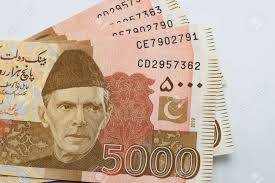Pakistani Currency in Circulation drops massively by Rs 700 billion: report
Shares

The recorded currency in circulation (CiC) in Pakistan has experienced a significant decline, dropping to Rs. 8.5 trillion. This decline signifies a substantial reduction in the informal cash holdings and the utilization of cash for conducting business transactions.
As of August 2023, CiC, encompassing the cash individuals keep in their wallets, closets, and even hidden in various places, accounted for 10 percent of the country's GDP. This figure may also include cash held by banks.
Data provided by the State Bank of Pakistan (SBP) reveals that CiC has plummeted by nearly Rs. 700 billion during the initial two months of the fiscal year 2023-24, marking a substantial decrease from the Rs. 9.148 trillion total currency stock recorded at the end of June FY23.
Simultaneously, the total deposits in local banks have reached Rs. 22.3 trillion, resulting in a CiC-to-bank deposit ratio of 25 percent, a considerable drop from the 34 percent reported in March 2023.
CiC, when considered as a percentage of Money Supply (M2), stands at over 27 percent. Notably, CiC began to decline following the activation of new budget provisions imposing a standard fee on cash withdrawals by non-filers, which potentially encouraged individuals to deposit their cash in banks.
Topline CEO Mohammed Sohail suggests that the reduction in CiC could be attributed to the high Return on Deposits, which banks are offering at around 20 percent. Additionally, the slowdown in sectors such as the property and auto markets, where people previously parked their funds, could be another contributing factor.
Sohail emphasizes the need to bring this so-called informal economy and undeclared wealth into the formal sector, given that CiC remains high at 28 percent of Money Supply, posing concerns regarding tax avoidance, corruption, and other reasons.
Despite the ongoing economic challenges, substantial transactions are still conducted in cash, creating a significant potential for this easily accessible cash to be channeled into illegal hawala-hundi markets and money laundering activities. The example of the Afghan currency market dealing with PKR serves as a notable illustration of this phenomenon
